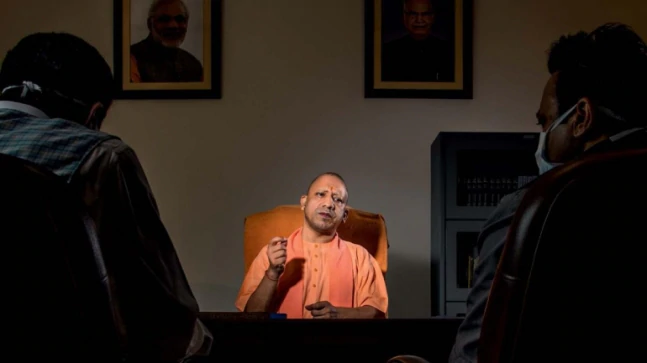Yogi Adityanath has been an unusual chief minister in India’s political landscape. Prior to his being appointed to the top job in Uttar Pradesh-among India’s most politically-significant states-in March 2017, Adityanath was not even speculated as being among the contenders for the job. As the head of a socio-religious institute in the state, he was primarily known for his radical views on Hindutva politics, often dabbling in unwarranted controversies. Yet, the 48-year-old chief minister, one of the youngest in India and with no previous administrative experience, has emerged as one of the most popular political figures in the country.
For the record fourth time in a row, respondents in the India Today Mood of the Nation (MOTN) survey-conducted every six months-have rated him as the No. 1 CM. This is unprecedented in the history of this survey, but it also reflects the tectonic shift in India’s dominant political ideology-the consolidation of the Hindu right wing.


Adityanath began his innings by focusing on fixing the law-and-order situation in his state, afflicted by an unholy nexus of politicians and criminals. He did succeed in creating fear among dreaded criminals, but also faced criticism for allegedly unleashing the terror of the police force, which acted with scant regard for the rule of law.
The past year has been particularly discomforting for the CM. From the custodial death of gangster Vikas Dubey to the rape and murder of a Dalit woman in Hathras, the role of UP police has come under massive scrutiny. And if this wasn’t enough, during the nationwide lockdown, Congress leader Priyanka Gandhi attacked him over the migrant crisis. To his credit, he handled the pandemic remarkably well despite the state being one of the largest recipients of home-bound migrants.
Yogi Adityanath also set a national discourse by giving legal validation to one of the Hindu right-wing politics’ pet projects-‘love jihad’. His government promulgated an ordinance aimed at stopping religious conversion by force, inviting massive criticism, at least in media discourse. On the back of this, the UP police targeted couples entering into interfaith marriages, forcing the judiciary to intervene.
The results of the MOTN poll, however, suggest that Adityanath’s actions were in sync with the beliefs held by a majority of the respondents-54 per cent believe in Yogi’s ‘love jihad’ ordinance. Unsurprisingly, 58 per cent of all respondents, and 61 per cent among Hindus, support laws against inter-faith marriages. Journalists and liberals may write reams against him, but he understands and caters to the majoritarian sentiment. That other BJP CMs are following in his footsteps is a testament to his emergence as a big Hindutva leader.

The silent performer
While Adityanath caught people’s fancy on a national level, at the state level, Odisha chief minister Naveen Patnaik emerged victorious with 51 per cent respondents from the state giving him positive ratings. And despite some similarities-both entered politics suddenly and both lead a spartan lifestyle-the two are quite different. While Adityanath is vocal about his opinions on national issues-from farm laws to cross-border terrorism-Patnaik has resolutely stayed away from national limelight, focused on state affairs and been successful in keeping the BJP and Congress at bay for two decades, showcasing the dominance of his party-Biju Janata Dal-in the state. This, though, doesn’t mean he has been complacent. To counter the BJP’s Hindutva politics, he has recently been making an emotional pitch based on the Odia identity. But when it comes to governance, he has avoided confrontation and adopted a transactional approach towards the Centre irrespective of the political formation. The strategy has paid off, making Patnaik the third CM to win five consecutive terms.
This article is auto-generated by Algorithm Source: www.indiatoday.in


